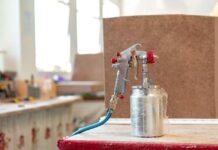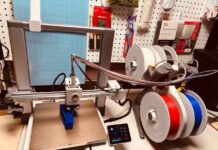THUNDER BAY – LIVING – Today with Youtube as a guide along with the growing amount of materials and DIY websites, more people than ever are learning how to do basic home repair as well as basic renovations in their homes.
For those new to DIY home repairs, stepping into the world of home maintenance can feel overwhelming. However, with a solid foundation of essential tools, many household repairs become not only manageable but satisfying.
Whether it’s fixing a leaky faucet, hanging a picture, or assembling furniture, having the right tools on hand can save you time, money, and hassle. Now remember as a beginning DIYer you likely don’t want to start major projects all on your own.
Here is a list of must-have tools for any beginner looking to tackle basic home repairs.
1. Screwdrivers (Flathead and Phillips)
Screwdrivers are a staple of any toolbox. There are two main types you’ll need: a flathead (slotted) screwdriver and a Phillips (cross) screwdriver. These tools are essential for tasks such as tightening cabinet handles, assembling furniture, or replacing batteries in small devices.
Tip: Opt for a set with various sizes to handle different screw types, or go for an interchangeable set with a single handle and multiple heads.
2. Hammer
A good-quality hammer is crucial for a wide range of tasks, from hanging pictures to small demolition jobs. A claw hammer, which has one flat side for driving nails and a claw for removing them, is perfect for beginners.
Tip: Choose a hammer with a comfortable grip to avoid hand fatigue during use.
3. Tape Measure
Accurate measurements are key to successful DIY projects. A 25-foot tape measure is versatile enough for most home projects, from measuring furniture dimensions to ensuring items are level before hanging.
Tip: Look for a tape measure with a lock feature to hold measurements securely.
4. Adjustable Wrench
An adjustable wrench allows you to tackle various nut and bolt sizes with one tool. It’s especially useful for plumbing repairs, such as fixing a leaky faucet or tightening loose pipe fittings.
Tip: Ensure your wrench has smooth, easy adjustments to fit different bolt sizes.
5. Pliers (Needle-Nose and Slip-Joint)
Pliers provide grip and leverage for twisting, bending, or cutting wire and holding small objects in place. Needle-nose pliers are perfect for precision tasks, while slip-joint pliers are versatile for gripping objects of various sizes.
Tip: Buy pliers with rubber-coated handles for a better grip.
6. Utility Knife
A sharp utility knife is a versatile tool for cutting materials like cardboard, drywall, or packaging. It’s also handy for trimming caulking, stripping wires, or opening paint cans.
Tip: Invest in a utility knife with a retractable blade for safety when not in use.
7. Level
A level ensures that pictures, shelves, and other installations are perfectly straight. A basic 9-inch torpedo level works well for most home applications, ensuring precision when hanging or installing anything horizontally.
Tip: Some levels come with built-in magnets, making them useful for hands-free tasks on metal surfaces.
8. Cordless Drill
A cordless drill is a game-changer for many home repairs. Whether you’re drilling holes or driving screws, this power tool makes tasks faster and easier. Invest in a model that includes various drill bits and screwdriver attachments for versatility.
Tip: Choose a cordless drill with a rechargeable lithium-ion battery for longer-lasting power.
9. Allen Wrench Set (Hex Keys)
Many pieces of flat-pack furniture require assembly with Allen wrenches. A set of both metric and standard (imperial) sizes will come in handy for assembling and tightening screws that have hexagonal sockets.
Tip: Keep an L-shaped Allen wrench set handy, as they’re easier to handle in tight spaces.
10. Stud Finder
A stud finder helps locate the wooden studs behind drywall, making it easier to securely hang heavy items like mirrors, TVs, and shelves. It ensures you don’t accidentally drill into wires or pipes behind the wall.
Tip: Opt for an electronic stud finder that detects both studs and live wires for added safety.
11. Safety Gear
While tools are essential for getting the job done, safety gear is just as important. Basic protective gear for DIY beginners includes:
- Safety glasses to shield your eyes from debris.
- Work gloves to protect your hands from sharp objects and splinters.
- Dust masks to prevent inhalation of dust or fumes during sanding or painting.
Conclusion
Starting a DIY home repair journey doesn’t require a massive investment in tools. With this basic toolkit, you’ll be well-equipped to handle many common repairs and maintenance tasks around the house. As you gain more confidence and experience, you can expand your toolkit to tackle more complex projects. Remember, the key to DIY success is patience and practice – and with these tools, you’re off to a great start!






